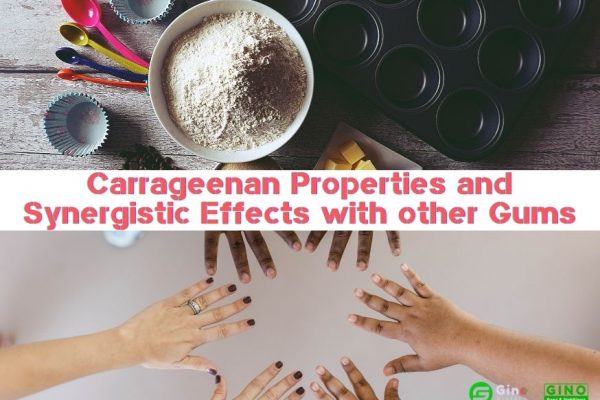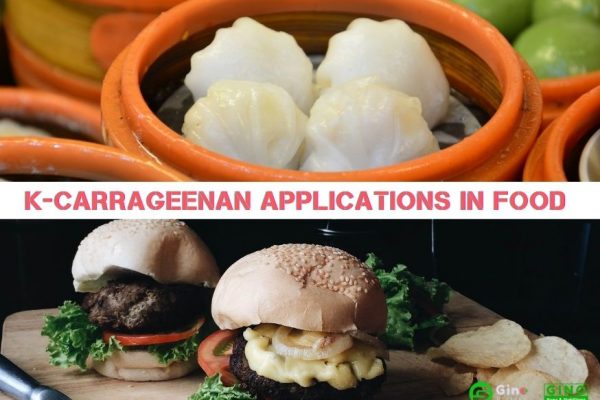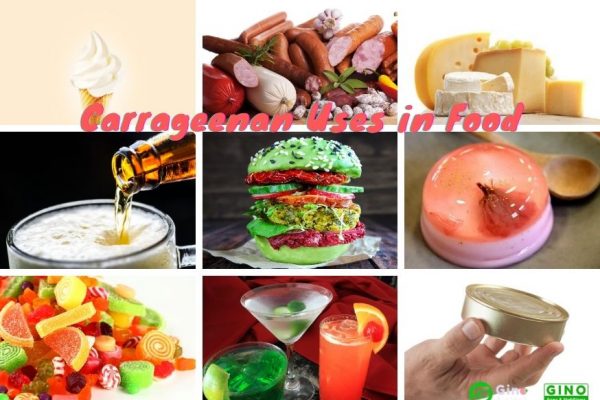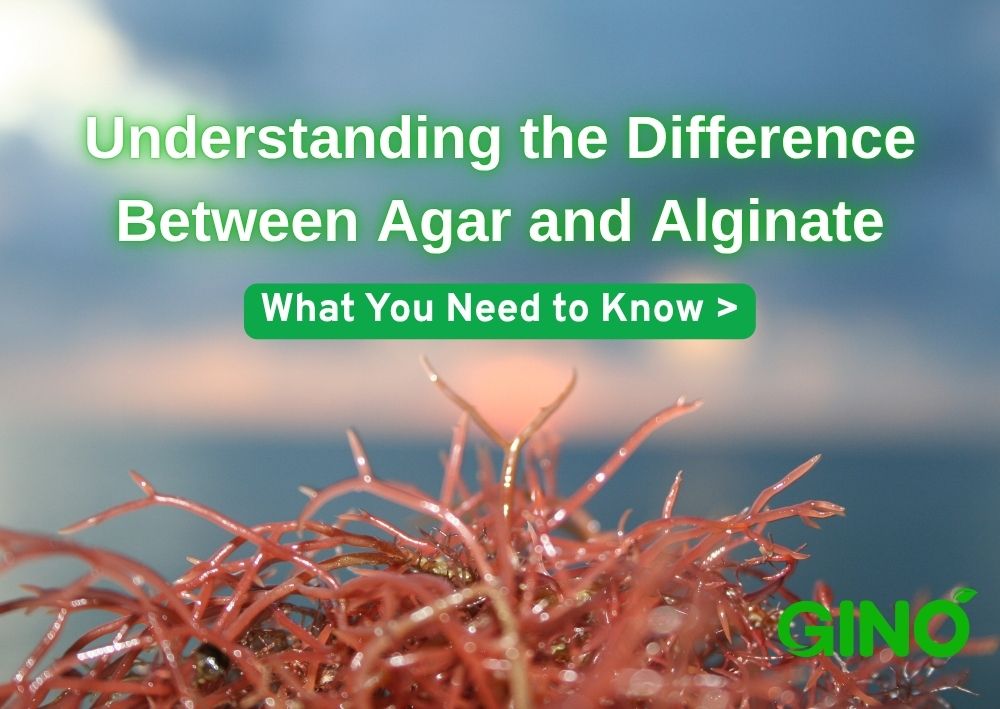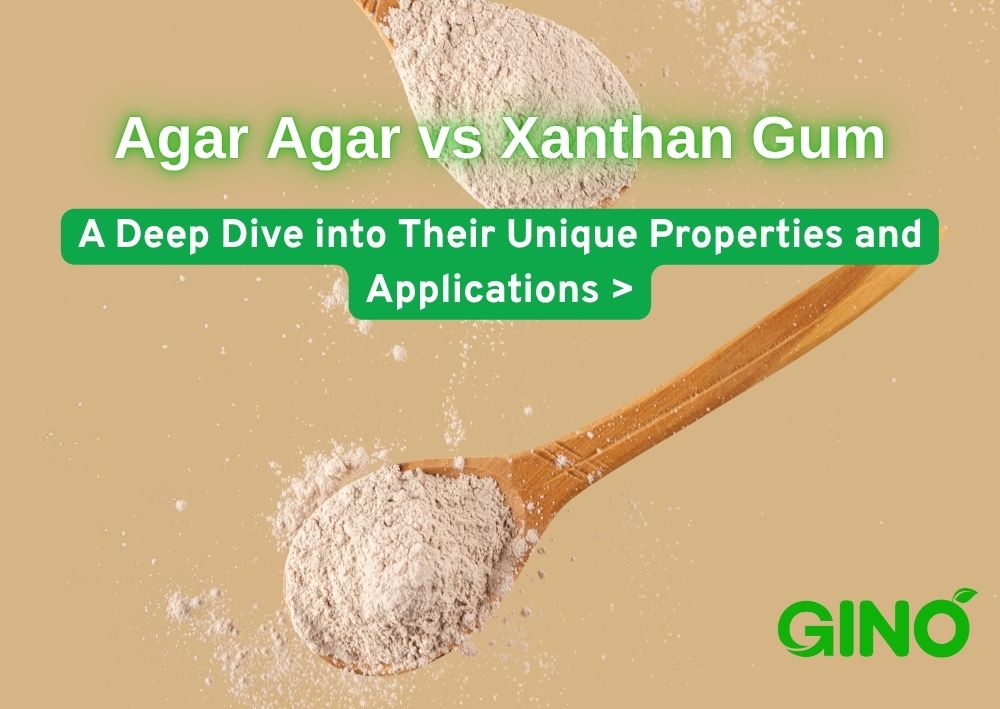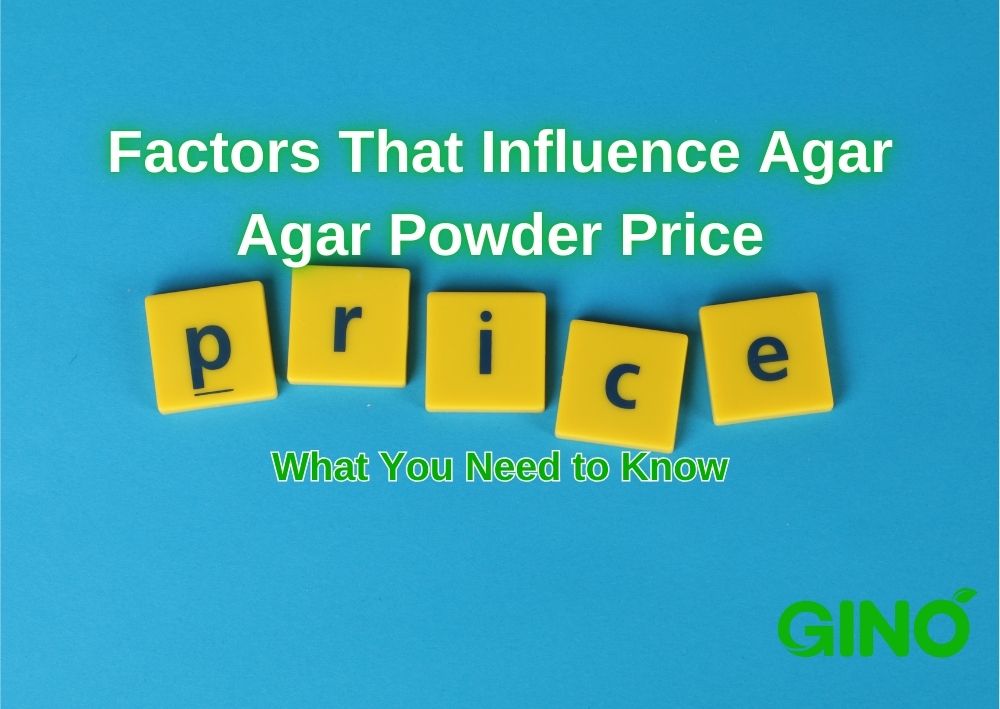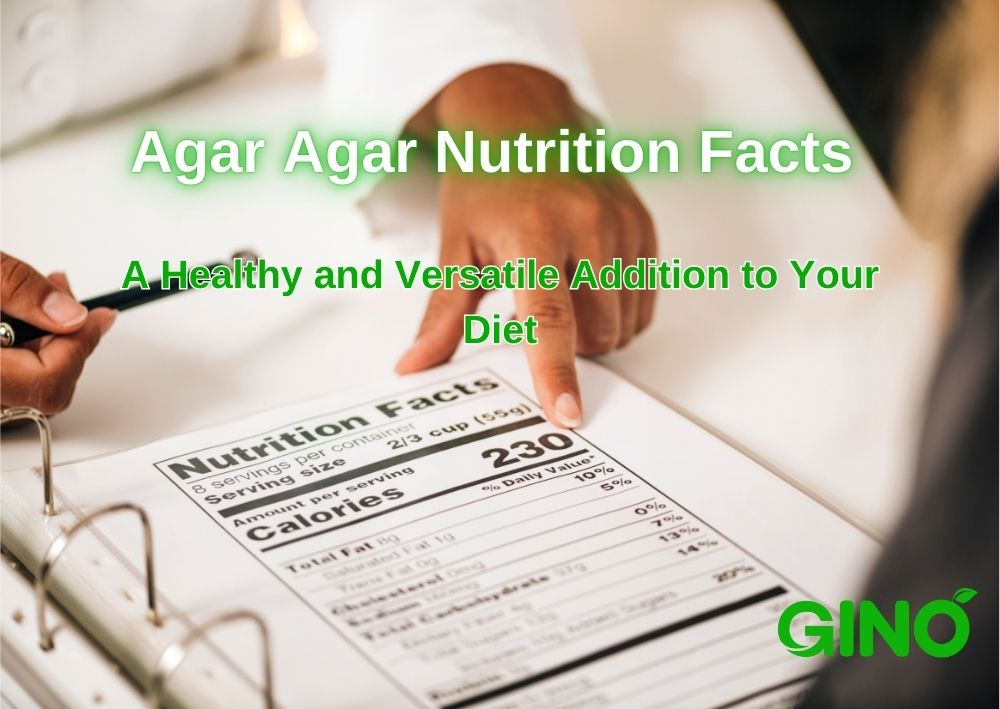For over 10 years, Gino Biotech has been a major supplier of food hydrocolloids. With our variety of plant-based gums & stabilizers, we can create tailor-made hydrocolloid solutions perfectly matched to the needs of our customers. READ MORE
Konjac Gum and Carrageenan in Jelly Applications
Table of Contents | Carrageenan in Jelly
Facebook
Twitter
LinkedIn
The main component of konjac gum is glucomannan (KGM), konjac gum can swell in water to form a high-viscosity sol, can react with kappa carrageenan to form a highly elastic thermally reversible gel.
The combination of carrageenan and konjac gum has been used in the food industry for many years, such as in fish products, meat sausage products, jelly, and other gel products.
Do you know the applications of konjac gum and carrageenan in jelly?
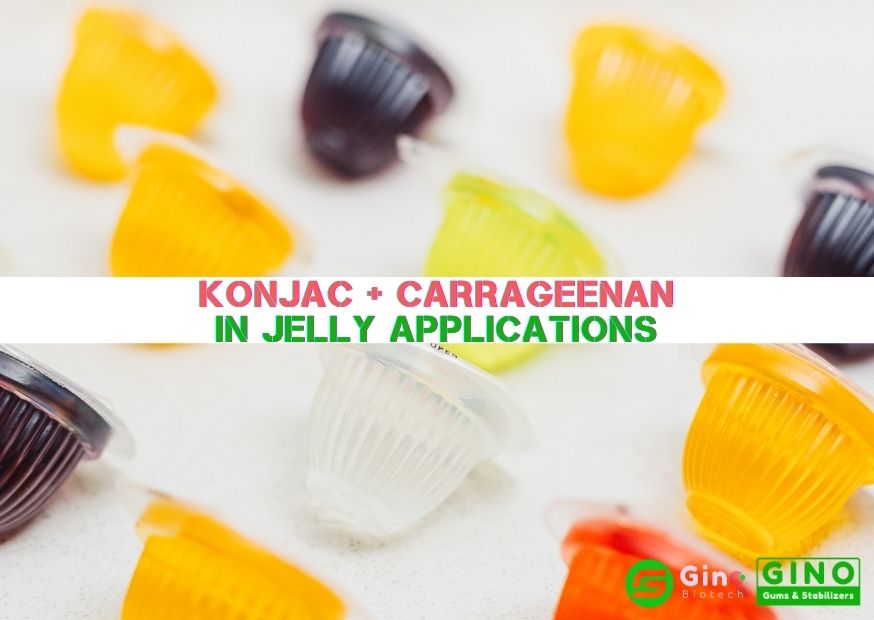
1. The Effect of Gel Strength of Carrageenan and Konjac Gum (Different Ratios) on Jelly Quality
When the total concentration of carrageenan and konjac gum remains unchanged after compounding, the synergistic effect of carrageenan and konjac gum will form a stable gel, which will improve the gel strength and make the taste fine and lubricious. In jelly making, the best taste was achieved when carrageenan 0.3%, konjac gum 0.4% and KCl 0.3% or so.
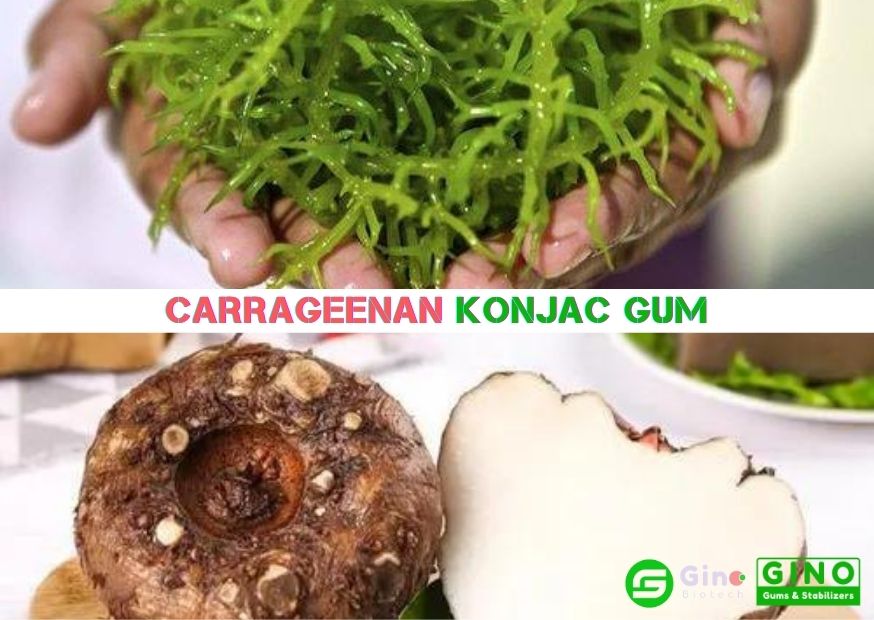
2. Relationship Between KCL and Gel Strength
The gel strength of carrageenan increases with the increase of KCL addition, but the brittleness of the gel, the water syneresis, and shrinkage will become larger with the increase of KCL.
The gel strength after KCL addition at low concentrations is larger than that without KCL addition, and it tends to be the same at high concentrations.
This is because the amount of potassium ions is certain, and the effect of chain linkage and weakening molecular repulsion is certain and does not increase with the concentration of carrageenan.
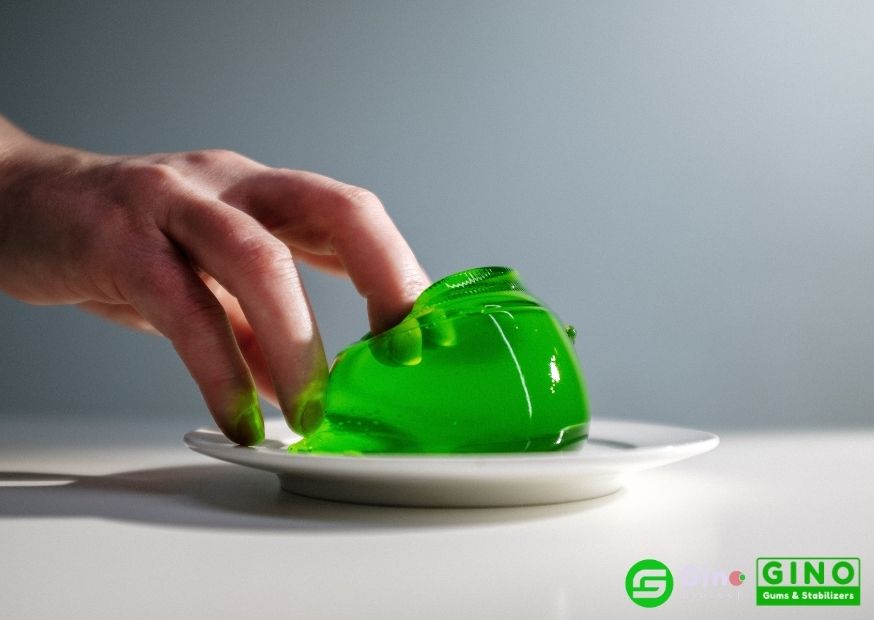
3.Relationship Between Konjac Gum and Water Retention
With the reduction of konjac gum, the phenomenon of water syneresis of jelly increased.
An appropriate increase in the proportion of konjac gum in the jelly can improve the shrinkage rate of dehydration (syneresis) of jelly, effectively overcoming the severe shortcomings of the carrageenan shrinkage phenomenon, but also make the jelly hardness moderate, good toughness, and elasticity, chewy feeling.
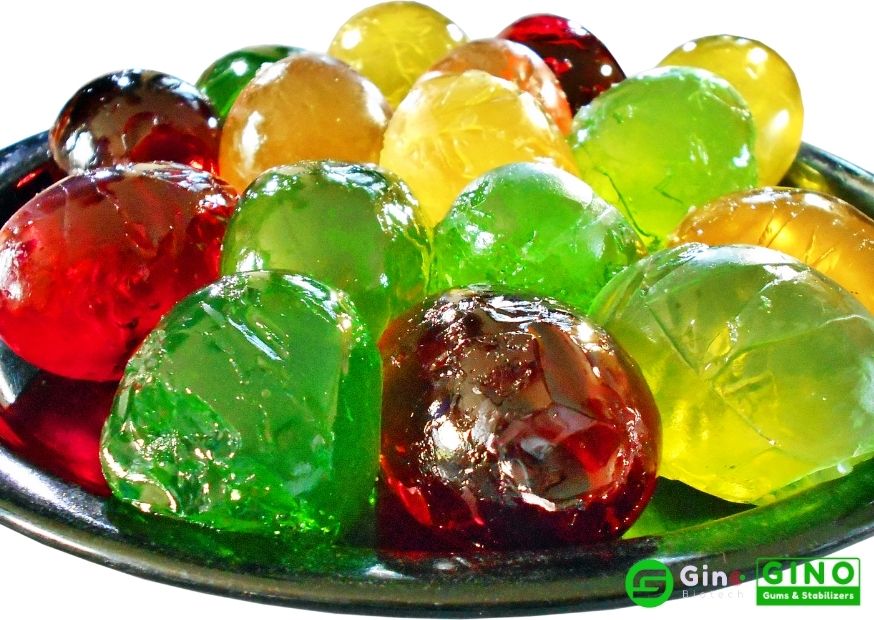
4.The Relationship between pH and Gel Strength
Compounding gum can only form a very weak gel after heating at pH=3.5 or below.
After heating at pH=5-7, the gel basically stabilizes at a relatively high-value range.
The strength of the compounding gel decreases when heated above pH=7.5.
This may be due to the hydrolysis of konjac gum in an alkaline environment thus affecting the final gel strength.
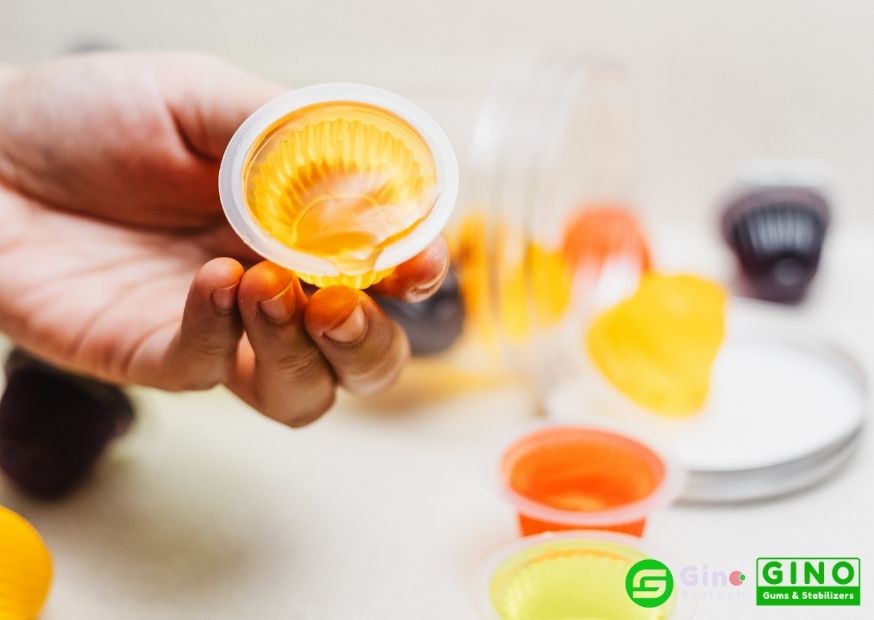
5.The Effects of Adding Acid at Different Temperatures on Gel Strength
The higher the temperature when adding acid, the weaker the gel strength.
This phenomenon is in accordance with the Arrhenius formula, where acid catalyzes the degradation of carrageenan and the reaction rate increases with the increase in temperature. The strength values were more stable when the acid was added at 80-60°C. The gel strength decreased when the acid was added at 60-50°C.
This may be due to the fact that at lower temperatures, by its approach to the gel temperature range, the double helix tends to occur, and the addition of H+ greatly interferes with the ability of K+ to form H-bonds with the negative charge of carrageenan sulfate, forming a more relaxed three-dimensional network and therefore a lower strength measured macroscopically.
6.Effect of Acid Adding Amount on Gel Strength
The gel strength decreased with the increase of acid addition. The gel strength of the compounded gum decreases slowly at about 0.15% acid addition.
In Conclusion
(1) The synergistic effect of carrageenan with konjac gum and KCl was produced when the total gum concentration was constant.
With different ratios, the taste and appearance of jelly are obviously different. The practice has proved that 0.3% carrageenan in jelly, 0.4% konjac gum, and 0.3% KCl compounding effect is better.
(2) The gel strength of carrageenan depends on the degree of the neatness of the molecular chain, but the increase in the amount of addition can improve the strength. A small amount of carrageenan can be compounded with konjac gum to obtain a high-strength gel.
(3) The higher the amount of citric acid added to the gel solution, the lower the strength after cooling, and the higher the temperature of acid addition, the more significant the reduction of high strength. However, the acid addition at too low a temperature will also interfere with the formation of the gel, so the most suitable acid addition temperature is 80-60 ℃.
(4) The combination of carrageenan and konjac gum can greatly reduce the shrinkage rate of jelly dehydration, i.e., the phenomenon of water precipitation can be improved. It is also shown that compounding with konjac gum is feasible, which expands the scope of konjac gum as a gelling agent in food applications.
(5) The carrageenan solution system was heated at different pHs, and the gel strength was reduced by decreasing pH. The gel could not be formed below pH 3.5. The formed gels remain stable in the gel state even at high acids like pH=3.5. The results observed for the complex gum system were similar to those of carrageenan, except that the strength decreased under an alkaline environment, while the carrageenan remained stable at about pH=9.
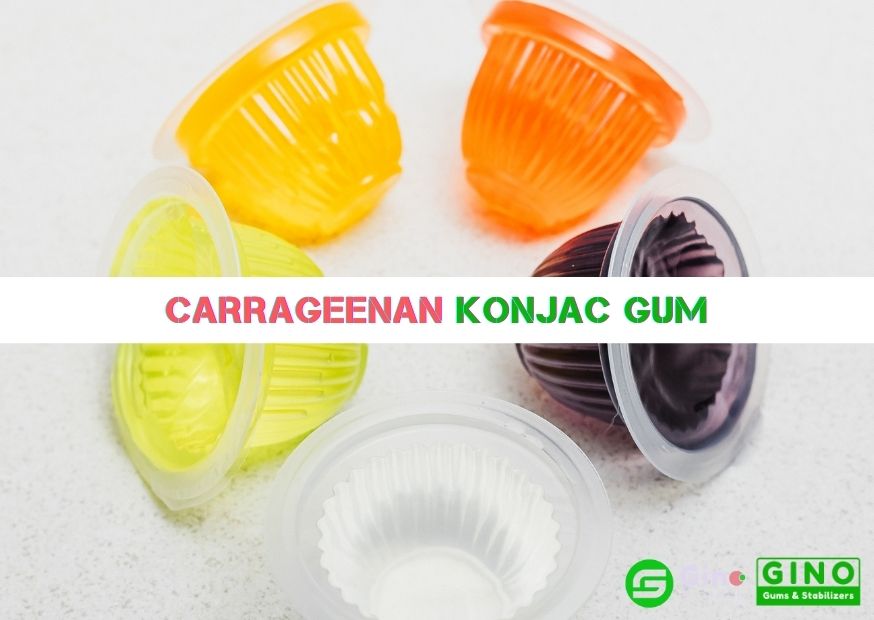
Related Articles
Recent Posts
About Gino Biotech

We are a biotech company specialized in the research, development and commercialization of innovative and technological food additives hydrocolloids Agar Agar, Carrageenan and Tailor-Made Stabilizer Solutions.
With the extended know-how and experience in the research, application and use of Hydrocolloids, we could provide one-stop-shop customized solutions perfectly matched to the needs of our customers.
Our products cover the needs of the Meat, Dairy, Bakery, Confectionery and other industrial sectors.


